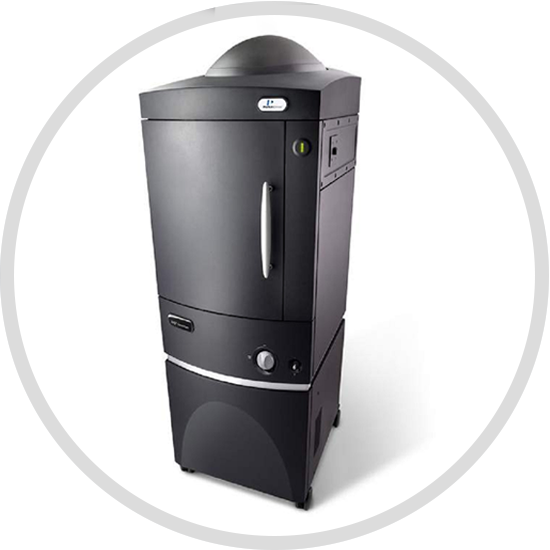Your partner in science for end-to-end CRDMO solutions
In-vivo Biology Services
In-vivo Pharmacology
Elevate your research to new heights and uncover groundbreaking discoveries in the realm of In-Vivo Biology which is the nexus of cutting-edge scientific exploration, renowned for its exceptional features that drive innovation and discovery. With a seasoned team of expert researchers and scientists at its core, the department offers unmatched expertise in the field of in-vivo biology. These experts collaborate seamlessly with researchers across various disciplines, providing tailored solutions to meet unique research objectives. A diverse array of in-vivo models, from mice to rabbits, coupled with myriad of downstream biomarker estimations enables comprehensive investigations into an extensive range of biological phenomena. The department boasts a state-of-the-art infrastructure, including advanced technologies and tools, ensuring researchers have access to the latest innovations. Ethical standards are paramount, with a deep commitment to the humane treatment and welfare of research animals. This dedication, combined with efficient workflows and data analysis capabilities, ensures timely and impactful results.
Inflammation Animal Models
Fibrosis Models
- Lung fibrosis in mice (LPS/Bleomycin)
- Liver fibrosis in mice (CCl4)
Kidney Models
- Unilateral Ureteral Obstruction (UUO) in mice
- Adenine diet induced Kidney Injury in mice
- 5/6 Nephrectomized Animal Model
Wound Healing
- Diabetic Wound Healing in mice
Inflammatory Bowel Disease Models
- DSS & Oxazolone-induced Ulcerative Colitis in mice
- TNBS-induced Colitis in rats (acute)
Systemic Lupus Erythematosus (SLE) Model
- MRL/lpr
Arthritis Model
- Collagen induced arthritis (CIA)
- Collagen Antibody Induced Arthritis (CAIA)
Skin Models
- TPA induced contact dermatitis
- Oxazolone induced allergic contact dermatitis
- Imiquimod induced psoriasis in mice and rats
- IL23 induced acanthosis in mice and rats

Neuropathic Pain Models
- CCI/SNI/PSNL models (rats & mice)
- SNL model (rats)
- Formalin induced nociception
- Capsaicin induced nociception
Disease Specific Pain Models
- Chemotherapy induced mechanical allodynia
- Bone cancer pain model
- Streptozotocin induced diabetic neuropathy
Inflammatory Pain Models
- CFA induced mechanical hyperalgesia
Alzheimer’s Disease / neurodegeneration Models
- MOG-EAE model of multiple sclerosis in rats and mice
- Dexamethasone induced muscle atrophy in mice
- Intrathecal / stereotaxic surgeries to inject compounds in different parts of spinal cord and brain
- Isolation of various brain regions using brain matrices
- Collection of CSF in rats
- Experience in target validation and development of target engagement models
- PK-PD Correlations using free tissue and brain concentrations
Glucose tolerance test in rat and mice
- Oral
- Intraperitoneal
- Intravenous
Pyruvate tolerance test
Insulin tolerance Test
Genetic disease models of diabetes
- ZDF rats
- ob/ob mice
- db/db mice
DIO models
- Rat
- Mice
- nSTZ-HFD fed NASH mice model
- CDA-HFD NASH model
- NAFLD mouse model
- STZ induced diabetic model in mice and rats
- STZ induced diabetic nephropathy in mice and rats
- GI emptying model in mice
Xenograft Solid Tumor Models
- Pancreatic cancer (MiaPaCa2, PANC1 & BxPC3)
- Lung cancer (A549)
- Gastric cancer (SNU-5 & Hs746T)
- Colon cancer (HCT116 , Colo 205, SW620, DLD-1 & LoVo)
- Prostate cancer (PC3, 22RV1 & DU145)
- Ovarian cancer (OVCAR3)
- Breast cancer (MCF7)
- Melanoma cancer (A375)
Xenograft Liquid Tumor Models
- Acute Myeloid Leukemia (KG-1)
- Chronic Myeloid Leukemia (K-562)
- Erythroleukemia (HEL 92.1.7)
Orthotopic Xenograft Models
- Glioblastoma (U87-MG)
Subcutaneous Syngeneic Models
- Colon Cancer (CT26)
- Melanoma Cancer (B16F10)
- Breast Cancer (4T1, EMT6)
- Kidney Cancer (Renca)
- Lung Cancer (KLN205 & LL/2 (LLC1))
- Pancreatic Cancer (LTPA)
Orthotopic Syngenic Tumor Model
- Breast Cancer (4T1, EMT6)
- Kidney Cancer (Renca)
Luciferase cell lines
- A total of 27 cell lines are available with Luc tagging for IVIS based xenograft models

